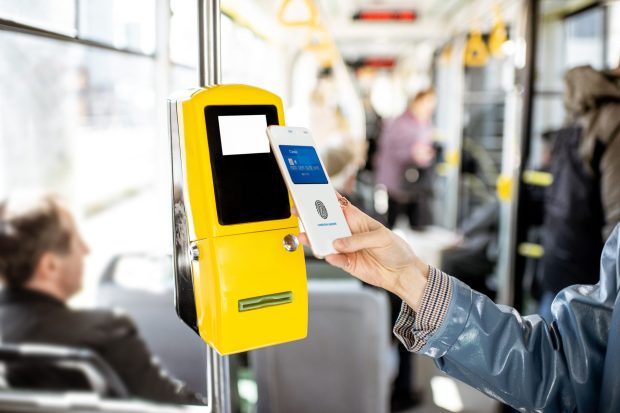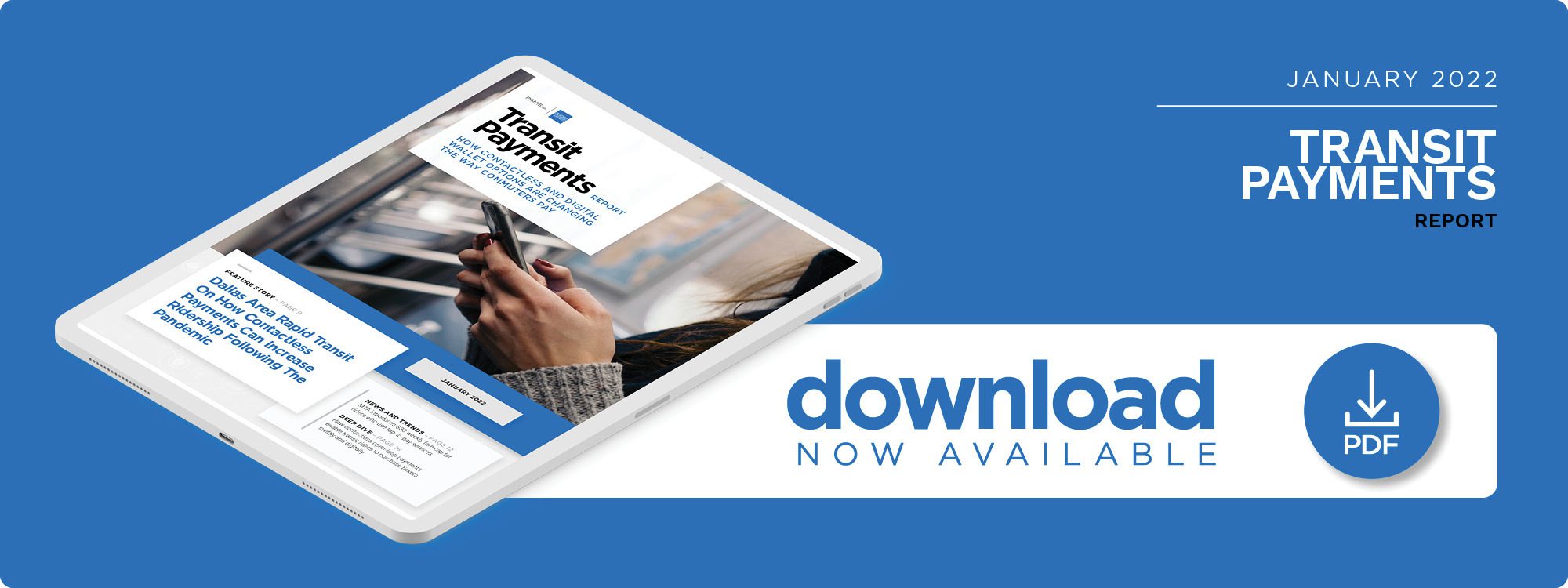Deep Dive: How Open-Loop Contactless Payments Could Power Global Transit

Pandemic-related concerns and restrictions brought contactless payments into the mainstream by prompting unprecedented numbers of consumers and merchants to adopt the technology. Contactless payments’ popularity extends far beyond retail, however. A recent report has found that 92% of public transit officials hope to use touchless payment and ticketing innovations to bring ridership back on track after its precipitous drop during the pandemic.
Transit providers traditionally rely on “closed-loop” payments such as fare cards, which hold only a prepaid amount that must be replenished when it runs out. “Open-loop” payments, by contrast, are connected directly to personal accounts such as credit or debit cards. These include contactless EMV cards, which work via NFC technology. The transportation space’s digitization still is in its early stages, but universal adoption of open-loop contactless payments is on the horizon for commuters in many regions of the world. The number of open-loop EMV cards in global use for ticketing is slated to jump from 24.8 million to an astounding 136.9 million by 2025.
The following Deep Dive explores how contactless payments and devices quickly have gained traction among commuters and explains why these technologies are poised to revolutionize the transit experience.
Open-loop Contactless Payment Eases Commuting, Travel Planning
Many daily commuters stopped using public transportation during the early days of the pandemic, and those who continued to use these services still needed to social distance on their journeys. Consumers slowly are returning to their pre-pandemic habits, venturing out to office buildings as well as storefronts, eateries and entertainment venues. As the pandemic carries on, however, consumers continue to seek out digital solutions that enhance public health and safety. Open-loop contactless travel is one such solution because it allows riders to purchase tickets with their everyday contactless payment methods — including digital wallets, smartphones and wearables — without ever having to load funds onto fare cards.
Account-based ticketing enables commuters to travel simply by tapping a card or scanning a token. The technology automatically calculates ticket costs and jettisons the need for preplanned fares — an especially helpful feature as commuting frequency remains sporadic for workers adopting hybrid remote and reduced in-office schedules. The demand for such capabilities is so high that approximately 150 large cities are considering EMV adoption as an add-on ticketing solution. The number of open-loop EMV cards used in ticketing in the U.S. is expected to rise from 1 million in 2020 to 13 million in 2025. The numbers for Latin America are even more impressive, as open-loop EMV cards for transit use in the region are anticipated to skyrocket from 3.7 million to 23 million in the same time period.
Riders are not the only individuals who stand to benefit from open-loop contactless payments, however. Tap-to-pay technologies — such as bank-issued contactless cards or mobile wallets — allow transit officials to get riders through gates faster and more efficiently, and they also decrease costs related to the issuance and replacement of transit-specific cards and tickets. Transit authorities then can outsource fare collection operations to vendors and payment providers, eliminating massive in-house accounting systems and the costs that come along with sustaining them. Enabling open-loop payments also significantly reduces transit authorities’ need for routine machine servicing and cash collection, as fewer commuters will choose to interact with ticketing kiosks.
Contactless Travel Is Well Underway
The pandemic helped crystallize public opinion in favor of contactless transit payments: 88% of worldwide public transit riders in a July 2021 survey said they now expect these payment options for their travels. Transit authorities are listening. Dallas is the latest U.S. city to adopt contactless open-loop fare payments, and New York City’s Metropolitan Transportation Authority reported that open-loop payments on its OMNY service doubled between March and July 2021. Similar trends are emerging globally: The Urban Mobility Center in Bulgaria’s capital city rolled out an open-loop contactless ticketing system on buses, trams and trolley buses in August.
Most transit agencies still are using bespoke systems that are both expensive to build and challenging to update, however, and 43% of authorities said implementing new ticketing features and processes is “hard” or “very hard.” A study found that 42% of transit companies plan to adopt the FPaaS model, and only 17% foresee continuing to use their bespoke systems. Additionally, 84% of public transit users anticipate ultimately returning to their pre-pandemic transportation habits, further highlighting the imminent need for public transit agencies to modernize payments. Authorities that postpone payments innovation place their long-term consumer experience at risk. Digital payments and ticketing also can reduce fraud and secondary sales.
Modernizing public transportation systems by including contactless payments technology will add an important tier of payment choice for consumers navigating this pandemic-influenced era. These innovations promise to smooth the ride for both commuters and transit authorities.

